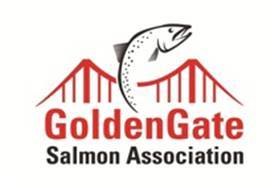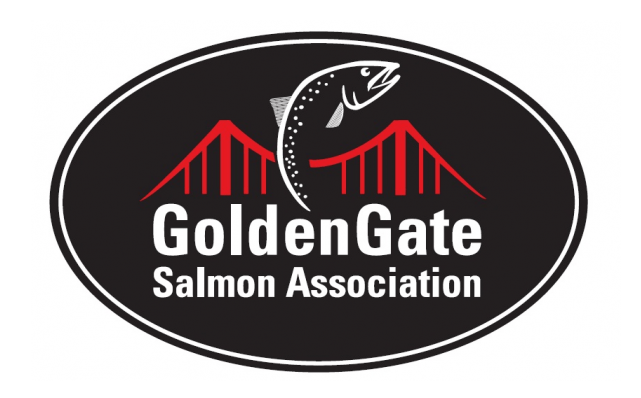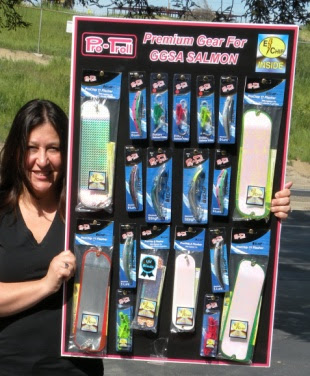Saltwater Fish Report for 4-11-2018
2018 Ocean Salmon Fishing Seasons Slashed Fishing curtailed due to drought hangover

by Michael Coats
4-11-2018
Website
The Pacific Fisheries Management Council (PFMC) has slashed ocean salmon fishing seasons for both sport and commercial salmon fishermen and women in 2018. The reduction in fishing days, announced April 10, amounts to cuts of about a third for the ocean sport fishery and over half of the commercial fishery, compared to a regular season. The drastic reductions are due to a forecast of relatively few adult Sacramento Basin fall run salmon, which constrains the season this year. That forecast comes from the National Marine Fisheries Service based on a weighted return of sub adult salmon to the Sacramento Valley in 2017.
The number of adult Sacramento salmon in the ocean are believed to be fewer because an estimated 95 to 98 percent of natural spawned eggs died in overheated Sacramento River spawning beds during the drought in 2015. This left very few surviving natural origin baby salmon that year. Those salmon would have returned this year as adults. Water managers at the time left too little water in Lake Shasta, the source of the upper Sacramento River, to cool the spawning beds. River temperatures exceeded 56 degrees Fahrenheit, the temperature beyond which salmon eggs die.
“This year’s greatly shortened commercial and sport seasons are caused by losses we sustained during the drought,” said GGSA president John McManus. “This could have been avoided if more water had been reserved to keep the Sacramento cool enough to support spawning salmon. The State Water Resources Control Board is in a position to insure we don’t see a repeat in the next drought and we hope they act to protect California’s unique salmon runs. Families and communities up and down the coastal and inland river areas depend on these salmon.”
The majority of salmon caught in the last few years and again this year are likely to be from one of the five salmon hatcheries in the Central Valley. Although they’re likely supplying the vast majority of this year’s fish, in other years they supply a minority, with the rest coming from natural spawning areas in Central Valley rivers.
“Natural origin salmon can vastly outnumber those contributed by hatcheries in years when our rivers get enough water for spawning and to deliver baby salmon to the ocean,” said GGSA board member Vance Staplin. “The natural areas have the capacity to supply many times what the hatcheries produce when the rivers are correctly managed.”
“Baby salmon need high flow, turbid, rapid runoff in the spring to safely migrate down Central Valley rivers and out to the ocean,” said Staplin. “We got that kind of runoff with last week’s storms which should help boost salmon survival.”
Sport ocean salmon fishing is already underway in Monterey Bay and points south. Sport ocean salmon fishing is set to open off the San Mateo, SF, Marin, Sonoma and the Mendocino coasts on June 17. In a welcome change from 2017, the far north of state ocean waters from southern Humboldt County to the Oregon border will have sport fishing, unlike last year.
Commercial salmon fishermen will see a few days of fishing from Monterey Bay south in May and June. From San Mateo County north, commercial trollers will be forced to sit mostly idle until late July, losing the normally valuable months of May, June and much of July.
The Golden Gate Salmon Association (www.goldengatesalmonassociation.org) is a coalition of salmon advocates that includes commercial and recreational salmon fisherman, businesses, restaurants, a native tribe, environmentalists, elected officials, families and communities that rely on salmon. GGSA’s mission is to protect and restore California’s largest salmon producing habitat comprised of the Central Valley river’s that feed the Bay-Delta ecosystem and the communities that rely on salmon as a long-term, sustainable, commercial, recreational and cultural resource.
Currently, California’s salmon industry is valued at $1.4 billion in economic activity annually in a normal season and about half that much in economic activity and jobs again in Oregon. The industry employs tens of thousands of people from Santa Barbara to northern Oregon. This is a huge economic bloc made up of commercial fishermen, recreational fishermen (fresh and salt water), fish processors, marinas, coastal communities, equipment manufacturers, the hotel and food industry, tribes, and the salmon fishing industry at large.
More Reports
Baby Salmon and Extra Water Headed Down the Feather River
Feather River
3-27-2018
Low Number of Spring-run Salmon Hang in the Balance The California Dept. of Fish and Wildlife announced the release of 500,000...... Read More
Help Defeat the WaterFix Twin Tunnels. They are alive again.

1-12-2018
The twin tunnel WaterFix project has died at least twice but it has re-emerged once more. The Delta Stewardship Council...... Read More

Website Hosting and Design provided by TECK.net